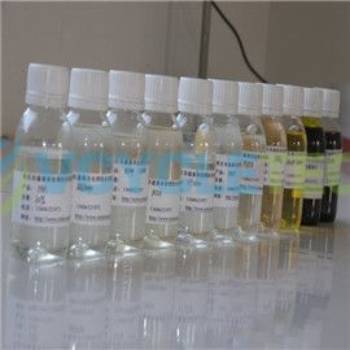Polyacrylic acid (PAA) is a water-soluble polymer, colorless or light yellow liquid. It can form stable compounds with metal ions, calcium, magnesium, etc., and has an excellent decomposition effect on calcium carbonate and calcium hydroxide in water. The molecular weight of this product used for water treatment is generally 2000-5000, and it is miscible with water, soluble in ethanol, isopropanol, etc. It is weakly acidic with a Pka of 4.75. It is easy to decompose above 300℃. Polyacrylic acid (PAA)is one of the earliest homopolymers used in polycarboxylic acid (PAA)products. Its carboxyl functional groups are partially ionized in an aqueous solution, so it has conductivity and is called polyelectrolyte.
The carboxylate in polyacrylic acid (PAA) has a chelating effect on calcium and magnesium ions, making it have scale inhibition performance. The polyacrylic acid electrolyte can also disperse amorphous materials such as soil and corrosion products and is a dispersant. Polyacrylic acid (PAA)has calcium carbonate inhibiting properties, but almost no calcium phosphate inhibiting effect. The potentiodynamic polarization curve test shows that polyacrylic acid (PAA) has a certain inhibitory effect on the corrosion anodic reaction, and belongs to the adsorption type corrosion inhibitor with anodic inhibition as the mainstay.
The results of electrochemical impedance experiments by PAA supplier show that the electrochemical impedance spectroscopy of the system with polyacrylic acid (PAA) is similar to that of the blank system. The PAA supplier says both are a simple capacitive impedance arc, indicating that polyacrylic acid (PAA) does not change the anodic reaction process.
Polyacrylic acid (PAA) can be prepared by acid hydrolysis at a temperature of about 100 degrees using polyacrylonitrile or polyacrylate, and an oxidation/reduction system composed of sodium sulfate aqueous solution as an initiator.
Polyacrylic acid (PAA) is directly polymerized by the free radical reaction of acrylic monomers in an aqueous medium. As a molecular weight regulator, isopropanol can not only make the molecular weight distribution narrower but also reduce the viscosity and remove the heat of the reaction.
The production process is generally batch-wise. When the amount of molecular weight regulator and initiator are high, both help reduces the molecular weight of the product polyacrylic acid (PAA). In order to prepare high molecular weight polyacrylic acid (PAA), an inert gas must be used to drive off the oxygen in the reaction system.

Polyacrylic Acid
It is often used in formulas with other water treatment agents and used as a scale inhibitor and dispersant in circulating cooling water systems such as power plants, chemical plants, fertilizer plants, oil refineries, and air conditioning systems. The specific formula and dosage are determined by experiment according to the water quality and equipment material on site.PAA supplier provides it and its by-products are utilized in non reusable diapers, ion exchange materials, adhesives and also cleaning agents. Detergents are commonly copolymers of acrylic acid that can be made use of in both zeolites and also phosphates in washing powder solutions.
They are also popular as a thickening, dispersing, putting on hold, as well as emulsifying agents in pharmaceuticals, cosmetics, as well as paints. Used alone, the general use concentration is 1-15mg/L.. In addition to its anti-scaling properties, this product can also disperse soil, corrosion products, and other amorphous substances. It is a dispersant. The individual dosage is 2-15mg/L. This product is often used as a compound water stabilizer with a corrosion inhibitor. And has a synergistic effect. This product also has water absorption.
Polyacrylic acid (PAA) is irritating to the eyes and skin. But it has no acute toxicity to the human body. Belongs to low toxicity. The measurement data of biological oxygen consumption BOD and chemical oxygen consumption COD also show that polyacrylic acid is a harmless substance.
PAA supplier packed in polyethylene plastic drums or iron drums or plastic drums lined with polyethylene. The net weight of the plastic drum is 25kg; the net weight of the iron plastic drum is 200kg. The storage date is generally 10 months.
For more polyacrylic acid (PAA) information, please ask our sales for details.